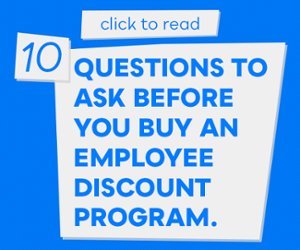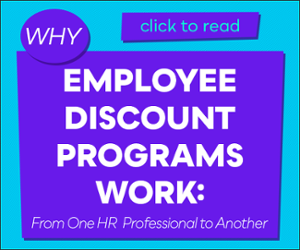“Our benefits are so expensive.”
How many times have you heard that one over the years? Accusingly, passive-aggressively, despondently... you've probably heard it in every tone imaginable (and with increasing frequency) as healthcare costs rise, along with every. other. cost.
In fairness, however, employees are truly suffering due to escalating costs of pretty much everything these days -- health care in particular. Everyone is. 98 million of them have cut spending on necessities like groceries, utilities and gas in order to afford it.
As a result, people are storming their HR departments demanding to know “why won’t the company pay for more???”
The fact is: organizations are paying for more. Few employers could cover 100% of employee health costs, even if they wanted to, but as costs increase, most end up paying a higher and higher percentage.
Now, experts are predicting that healthcare costs will increase by at least 5% in 2023 alone. Many of them have absorbed as much of the costs as they can, and are faced with the choice between cutting benefits or shifting more of the cost to employees.
So what can you do to address the incredibly expensive elephant in the room with your staff?
A Brief History of Healthcare Benefits
Health care benefits were originally intended as a way to differentiate an employer from their competition while providing protection to employees.
Now this benefit is nearly ubiquitous, and is consistently the number one most valued benefit to employees. It's also the number one cost to employers (after wages, of course) totaling an average of 7.9% of a business' compensation package budget. Plus, there's always pressure to add more and more benefits (like family and reproductive benefits) to stay competitive.
Still, many employees feel the company should do more. Surveys have shown that increased costs feel like a pay cut to employees, and can endanger employee engagement, productivity and retention.
So to sum up, employers can't absorb all the cost, they can't cut the benefit and they can't pass along all the increases without facing some amount of backlash.
That doesn't mean you're helpless in the situation. In fact, HR professionals can be a powerful first line of defense against the gaps in knowledge that cause employees to direct their frustration in the wrong direction.
Addressing Benefits Costs: Communication. Education. Imagination.
 Effective communication has always been a crucial aspect of HR, from recruitment to employee onboarding and policy management. However, in today's climate, thorough and transparent communication is more important than ever.
Effective communication has always been a crucial aspect of HR, from recruitment to employee onboarding and policy management. However, in today's climate, thorough and transparent communication is more important than ever.
How crucial is this communication? Think of it this way. You've probably heard a lot about how important proper “branding” is in forming a positive connection between a company and its customers. When you think of HR as the role by which "branding" occurs between a company and its employees, you'll see just how much power you have in how employees perceive the company.
The truth is powerful, especially when it comes from HR as spokesperson for the whole company (even more so than when it comes from management). Inform your employees of the hard numbers - the amount the company is investing, the other options vetted and rejected, and the proactive steps you're taking to offset the effects of escalating costs. Most will appreciate it.
Consider these five strategies to protect your employee engagement and workplace stability in the wake of accelerating health benefits costs:
- Don’t Play the Blame Game - It is important not to let the situation devolve into a festival of complaints. Blaming executives, the government, insurance companies, or anyone else is unproductive. The rising cost of health insurance is influenced by many complex factors that cannot be summarized in a simple phrase or soundbite. You can gain more insight into the complexity of these issues by reading our article: "10 Reasons Why Health Benefits Costs Will Increase." While it's true you're not directly responsible for the rising costs, playing the victim will not satisfy your employees, nor will it foster their empathy. It is more productive to take a different approach…
- Be Transparent - It's time to put your open-door policies to good use. Be upfront and honest when you see inevitable increases looming. Show, rather than just tell, employees the exactly how much company is forking out to protect employees from these rising costs. If some employees are more persistent or genuinely interested, be prepared to demonstrate the extensive efforts you and your management team have made to keep prices down by exploring various vendors and plans.
- Expand Your Options - When premium increases are unavoidable, collaborate with vendors to expand the range of options available, such as cafeteria plans or Health Savings Accounts (HSAs). We've seen that employees who consider themselves to be young and healthy gravitate toward high-deductible health plans when offered, in order to keep their personal costs down. If cost, rather than depth of coverage, is the primary concern, help employees understand the options that align with their budgets. Empowering employees with some control over their choices is a great way to address the situation. Also wherever feasible, work with management to match a percentage of contributions to these plans.
- Help your Employees Be Better Healthcare Consumers - Do your employees know when to use an Instacare facility instead of the emergency room? Even more importantly, do they know that their ER trip will not only cost them more today, but will increase premiums for the everyone for many years to come? Can employees easily find in-network providers? Smarter consumers are a boon to the whole company. Plus, this information helps employees feel a sense of ownership in their own healthcare costs.
 Consider Other Low Cost Perks - Many organizations find great success in offering perks that hold tangible value for employees, but require little to no additional expense. This can help counterbalance the negative impact of insurance rate hikes. Some ideas include exploring the possibility of expanding vacation time or implementing flexible work arrangements. You could also offer fitness reimbursements or relax the dress code. Additionally, consider providing employee discounts. The best employee discount programs stretch employees' paychecks further on purchases they make every day. Plus, each time they save, they'll have you, their employer, to thank.
Consider Other Low Cost Perks - Many organizations find great success in offering perks that hold tangible value for employees, but require little to no additional expense. This can help counterbalance the negative impact of insurance rate hikes. Some ideas include exploring the possibility of expanding vacation time or implementing flexible work arrangements. You could also offer fitness reimbursements or relax the dress code. Additionally, consider providing employee discounts. The best employee discount programs stretch employees' paychecks further on purchases they make every day. Plus, each time they save, they'll have you, their employer, to thank.
Benefits are High Stakes
Recent studies have shown that people are willing to change jobs and take less salary for better benefits. Many older workers are staying in the workforce to retain these benefits. Employees who are satisfied with their benefits are four times more likely to be satisfied with their jobs.
There isn’t much you can do to control costs, true. However, you do have the power to manage the way employees perceive those changes through the way you communicate with them. The way you introduce changes, prove your efforts and offset negatives with additional benefits can have a profound effect on engagement. Protecting your most valuable resource - engaged employees - always takes priority.
You’ll never get rid of the “Why won’t the company pay more?” question.
But you can be prepared with the best possible response.
For more in-depth open enrollment insights, check out our article: 2023 Open Enrollment: 10 Tips for HR Professionals.








